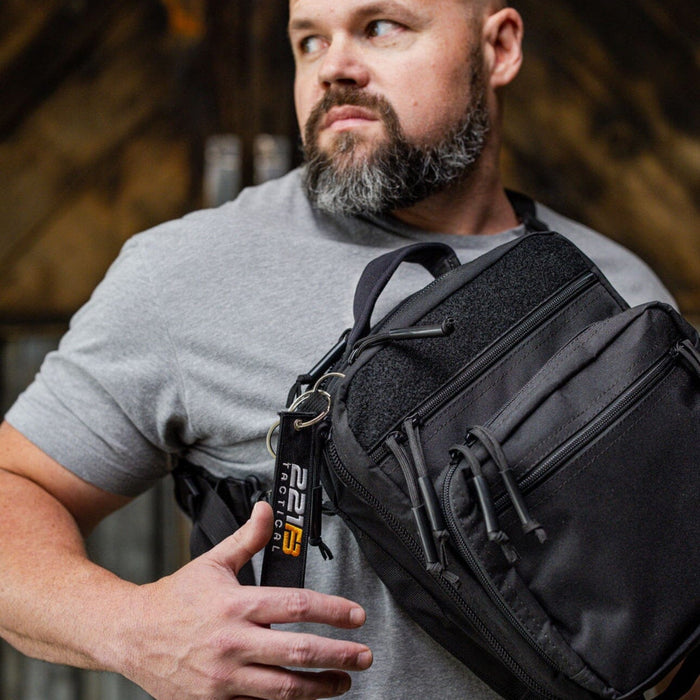
-
 One of the primary reasons individuals opt for off-body carry is comfort. While on-body holsters can sometimes feel restrictive or uncomfortable, especially over extended periods, concealed carry bags offer a more ergonomic and adaptable solution.Read now
One of the primary reasons individuals opt for off-body carry is comfort. While on-body holsters can sometimes feel restrictive or uncomfortable, especially over extended periods, concealed carry bags offer a more ergonomic and adaptable solution.Read now -

Concealed Carry Bags - Part 1: Advantages To Off-Body Carry
Read nowOff-body concealed carry refers to the practice of carrying a weapon in a bag, purse, briefcase or another type of container rather than directly on the body. While some purists argue for the immediacy of on-person carry, off-body methods offer distinct advantages worth considering.
-

What Stops Bullets and What Does Not? Part 2
Read nowPart 2: Outside The Home In my previous article, I said it’s easier to find protection from bullets outside the typical home than inside. However, outside the home, the odds of needing it are much greater, so it’s worthwhile understanding...
-

What Stops Bullets and What Does Not?
Read nowWhat stops bullets, and what does not? It’s a simple question, and yet so foundational—if you’re concerned enough about personal and family safety to prepare defenses against contingencies such as home invasions and random gun violence outside the home. In your planning, have you given it any thought, much less prepared for it?
-

Home Invasions, Part 2: Planning the Tricky Part
Read nowPart 1 of this discussion on how to prevent and prepare for a home invasion offered guidelines for preventing one from occurring in the first place, as well as the beginning of a predetermined action plan that involves all family...
-

Home Invasions, Part 1: Prevent & Plan
Read nowFBI statistics show there are 1.65 million home invasions in the U.S. each year. A home is broken into every 30 seconds. The rate of burglaries varies from state to state. For example, New Mexico has 696.8 burglaries per 100,000...
-
The Best Thermals For Police Officers And Anyone Who Works Outside In The Winter
Read nowWhat are the best winter cold weather gear thermals for police officers and those working outdoors?
Now some with experience in the outdoors might say, "layer up to stay warm." Well this might work if your hiking or skiing because you can easily stop to shed a layer or two if you start getting too warm. However this isn't an easy option while on duty as a police officer. It would require removal of your police radio, gun belt, body armor and uniform shirt. Not a quick or easy task. Additionally, many officers can find themselves overheating on their core, beneath their body armor, while their arms, shoulders and upper chest/neck are freezing.
-

How to set up a plate carrier, the best place for your IFAK and where your plate carrier should sit on your body.
Read nowHow To Set Up A Plate Carrier
First things first; why are you wearing a plate carrier. You must first answer this question before moving on to the next steps. Are you simply wearing it for protection against being shot? If so, what kind of bullets are you concerned about getting shot with; .223 or 9mm (or one of the many other rifle or pistol rounds)?
Are you yourself carrying a weapon? If so, what kind of weapon; a rifle or a pistol. If so, you will need to carry additional ammo. How much ammo will you need to carry. Maybe you're carrying a rifle and a pistol as a secondary weapon. In this case, you'll have to carry ammo for both weapons.
All these things must be taken into consideration prior to setting up your plate carrier. But for now, let's start off with the type of plates you need.
-

Equinoxx Stage 3 / K2 Factoid #5 of 5: High Value for Any Cold Weather Activity
Read nowOur final Factoid is that, with the addition of K2 Thermal to our Equinoxx line, any cold weather activity can be engaged in more effectively, efficiently, and comfortably.
This makes K2 Thermal a great holiday gift for anyone who works or plays in cold weather.
From postal workers and courier drivers to traffic and school crossing guards; from cable installers and linesmen to construction and oil rig workers, there are numerous outdoor work applications for K2. There’s even more outdoor recreational activities, such as hunting, fishing, hiking, camping, golf, skiing, ice skating, bird watching.Importantly, to get value from K2 Thermal, one doesn’t need to do some activity requiring special physical dexterity or athletic prowess. For example, courier delivery doesn’t require fine motor dexterity, but wouldn’t it be more pleasant to have it? One can wear a bulky coat to chop firewood, but wouldn’t it be more enjoyable (and maybe even safer) to wear a light thermal shirt that provides full freedom of movement. Motorcycle or bike riders could wear it to block wind as well as enjoy a greater sense of freedom.







